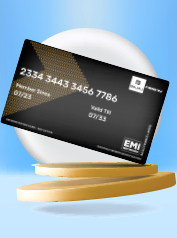Here’s all you need to know about medical reimbursements
As healthcare expenses are on the rise, employers are increasingly providing medical reimbursement benefits to employees. This is done to ease the financial burden on them and their families. This arrangement involves the employer reimbursing a portion of the employee's medical expenses.
Additionally, you can benefit from an income tax exemption of up to ₹15,000 through medical reimbursement. However, it's crucial to adhere to the guidelines established by your organisation. This can enable you to avail of these medical reimbursement benefits.
Here are a few medical reimbursement rules about which you must be aware to receive the facility of tax exemption:
Medical reimbursement funds should be utilised exclusively for medical expenses.
Tax exemptions apply to medical costs incurred for your spouse, children, non-working parents, and siblings.
You can claim medical reimbursement for prescribed medications and treatments obtained from clinics, private hospitals, and government hospitals.
Submit your medical bills to your employer for reimbursement; such expenses cannot be claimed on your income tax returns.
In the fiscal year 2018–19, a standard deduction of ₹40,000 has been reintroduced. This deduction can be utilised, along with any other tax breaks, including medical expenses such as transportation costs.
Follow these simple steps to file a medical reimbursement claim:
To file a claim, you must have received the treatment in the network hospital of your organisation
Contact the concerned department at your firm and inform them about your claim
Provide all the bills related to your treatment
Fill in the medical reimbursement claim form
Following that, the organisation will verify the provided details
Once your medical reimbursement form and given details get approved, you will receive your claim money in your bank account
In some organisations, the employer may offer a predetermined sum every month for their medical bills. This is rather than compensating a percentage of an employee's incurred expenditures, as medical allowance.
Most of the time, individuals confuse medical reimbursement with medical allowance. However, they are distinctive from one another. Here’s a closer look at their differences:
Medical Reimbursement |
Medical Allowance |
|---|---|
Under this, the employer covers a proportion of the employee's medical expenditures. |
The employer offers a predetermined sum every month for their medical bills. |
You are required to submit the medical bills to claim it. |
You are not required to submit any medical invoices to get the compensation. |
You will get the benefit of tax exemption of up to ₹15,000. |
It is not eligible for any tax exemptions. |
Here are a few things about medical reimbursement facilities that are worth keeping in mind while filing for a medical reimbursement:
You cannot file a claim for healthcare expenditure from the previous financial year
Private or government hospitals that are owned by your employer have no maximum limit on payments for expenses
Premiums for mediclaim policies are covered by Section 80D benefits
The Internal Revenue Code's Section 80D permits tax deductions in exchange for medical payments but not income tax exemptions
No, funds obtained through a medical reimbursement claim represent a refund of expenses that the employee has already incurred on themselves or their family members for medical purposes. As such, they are not taxable.
Employees of the company, their spouses, children, and other family members who are not employed and are financially reliant on the employee.
No, you can’t file for a medical reimbursement claim from the previous year. Only the medical expenses you incurred in the relevant fiscal year may be reimbursed by your employer.
You will get the advantage of claiming a medical reimbursement income tax exemption of up to ₹15,000.
To file a claim, you must have received the treatment in the network hospital of your organisation. You can file for the same by providing medical treatment bills to your employer.












